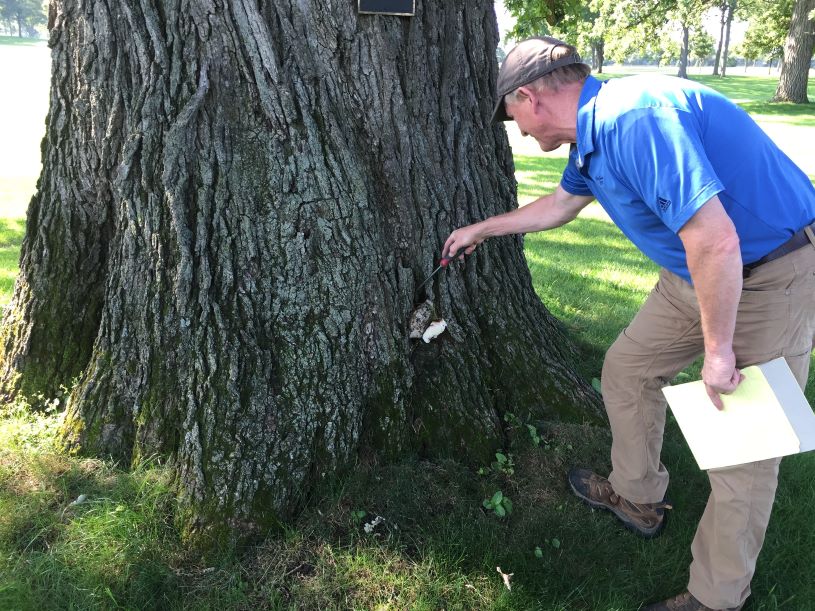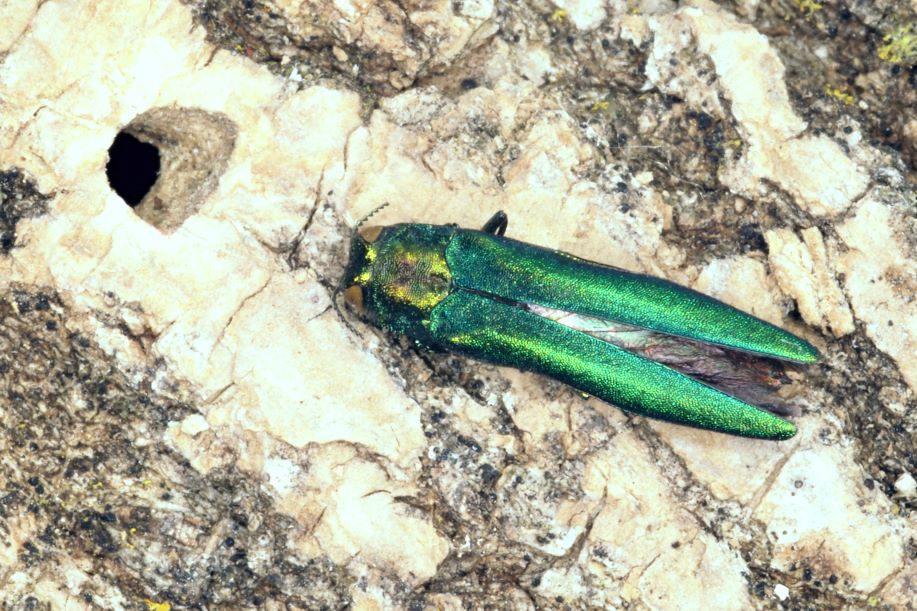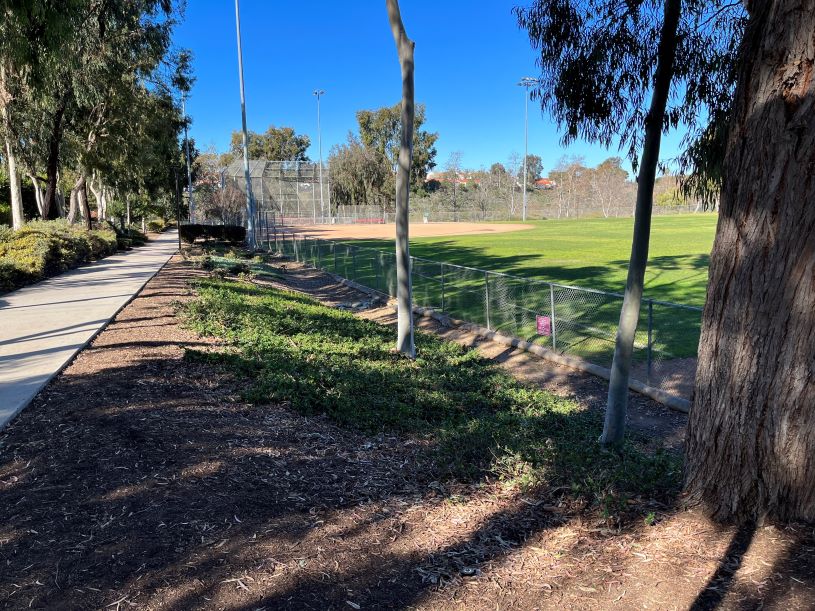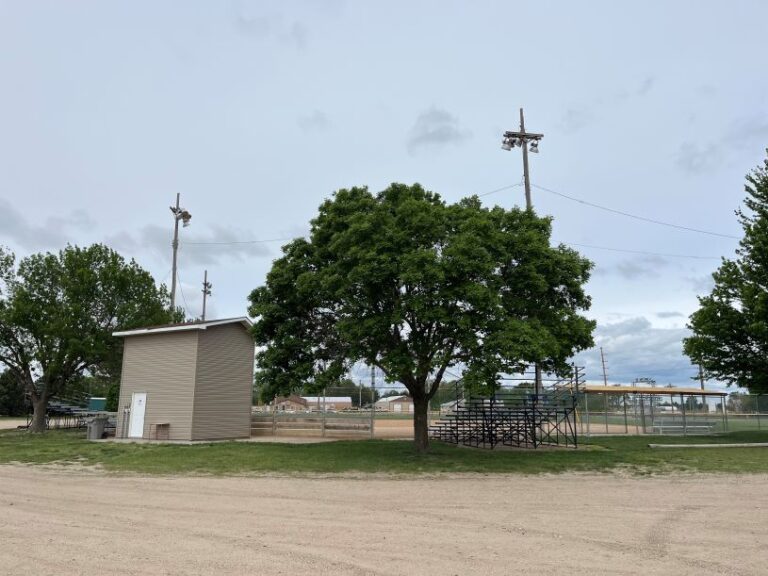By John C. Fech
Hardwood and coniferous trees provide many benefits to campus and sports field properties, including shade, wildlife enhancement, songbird habitat, color in summer and fall, framing, texture, a sense of place, provision of a ceiling plane and winter color of bark. Unfortunately, these sometimes go unappreciated.
As sports field managers or grounds managers, your duty is not only to keep these trees looking good and their benefits obvious, but to make yourself look good in the process. One of the important steps in doing so is controlling insects and diseases.
Some insects eat leaves, others suck the juice out of stems. These are problematic for sure, but the ones that we’re most concerned about are the ones that eat the permanent parts of the tree and the conductive vessels needed for water and nutrient movement. Identifying the insect is always a good start, but considering where they feed and the consequences of that feeding complete the management picture.
Tree pests include pathogens too. As with insects, some are more concerning than others. Diseases that clog the conductive vessels and degrade the integrity of the heartwood are much more troublesome than those that cause ugly spots on the leaves. All are likely to draw questions from coaches, students, players and administrators. But knowing the more invasive ones from the merely aesthetic will help with overall tree management.
Looking, looking, looking
You can’t control tree pests if you don’t know that they’re there. As such, it’s crucial to set up a scouting program that involves regular inspections for both insects and diseases.
First, scouting early and often is important. Control of tree pests is much easier when they are small or medium sized rather than fully mature.
Second, assigning staff to regularly inspect trees can be formatted to the local routine of the facility. In some locations, getting a few staff members to dedicate a major part of their workweek to this job is a good way to go. These people can be chosen based on their observational skills and their sense of urgency regarding a particular problem. In other situations, instructing all staff members to be on the lookout for tree pests as they go about their traditional duties is best. Having more eyes on a particular set of woody plants can give them the attention that they’re due. Regardless of the approach, it’s important that it be regular and frequent (i.e., several times per week).

Record keeping
It’s sometimes tedious or even trivial to keep good notes about pest populations, but it’s crucial when it comes to controlling them from year to year. Knowing that you had a problem in a particular part of campus or near the bleachers by Field B is helpful when it comes to ordering pest-control products for the upcoming year and paying special attention to that area or those trees when scouting.
Record keeping can be as simple as multicolored dots on a map alongside a key that identifies each pest and each color or as sophisticated as a GPS system that overlays pest problems with coordinates. Whichever you choose, make sure that it’s easy to navigate, or chances are it will never be used.
Which pest is which?
Is it a borer, beetle or planthopper? A root rot or a wilt? Identifying these maladies as specifically as possible is helpful, as each requires a different set of cultural and chemical control measures. Getting to know these pests requires a bit of effort, but can be as simple as sending staff to a “tree pest problem day” at the local university field day or state arborists conference. A few hours spent at these events will pay big dividends.
In addition to formal and informal training, there are other resources for identification – books, websites and in-person consultants. Two of the all-time standards for print references are “Diseases of Trees and Shrubs” by Johnson and Lyon and “Insects that Feed on Trees and Shrubs” by Wayne Sinclair, Warren Johnson and Howard Lyon. Other great sources of information are “Garden Pests of North America” by Whitney Cranshaw, Guide to Insect Pests of Woody Plants (https://www.uky.edu/Ag/Entomology/treepestguide/treeintro.html) and iNaturalist (https://www.inaturalist.org/).
In-person consultants are available in the form of ISA Certified Arborists and university extension faculty members. Check out https://www.treesaregood.org/findanarborist/findanarborist and your local land grant university Department of Forestry, Horticulture, Plant Pathology or Entomology for more information.

Prioritize Trees
Let’s face it. Some trees are just more important than others. Although there are many factors that can be used to prioritize trees on the properties that you manage, the following almost always rise to the top of the list:
- Location – Is it in a parking lot island or in a mulch bed next to bleachers? At the entrance to campus or behind the storage sheds? Leaning over the outfield fences or shading the dugouts? These specifics can really impact whether a particular specimen is a good place. Hard-to-grow spots where the soil is compacted will challenge any plant’s root system – trees included. At the same time, well-sited shade trees that reduce the temperature for spectators but don’t drop lots of debris on the playing fields or shade the turf are a real plus.
- Age – Very young trees or very mature trees can be hard to justify in the sports turf landscape when it comes time to support a pesticide application. If it’s just a couple of years old and it becomes infected or infested with a serious pest, then it’s usually more prudent to simply remove it and move on to another species. Likewise, the amount of product required to treat a borer infestation on a super large tree is not only costly, but also can be difficult to move to the canopy from trunk injections; spraying the entire leaf mass adds a whole other dimension to the worthiness of controlling various pests on a large tree.
- Historical and sentimental value – Trees that were planted by the founders of the facility or chair of the fundraising group are sometimes easier to prioritize than volunteer trees that sprouted here and there on their own. Likewise, fields or campuses that bear the name of a particular tree species (for example, Hickory Hills), sort of beg for the inclusion of at least one tree of that species.
- Uniqueness and diversity – A sports field landscape that contains a whole bunch of just a few species is prone to being wiped out by a particular insect or pathogen. To expand the genetic resistance and appeal of the grounds near sports fields, planting and retaining a wide variety of species that are recommended by local arboreta is highly encouraged.

Prioritize Pests
As mentioned, the insects and pathogens that degrade the permanent parts of the tree tend to be the most impactful. As such, we can place a higher value on the pests that damage the trunk, roots, base/bole and branches over those that affect the leaves and flowers. Certainly, mites and insects that suck the sap out of the leaves make trees look ugly, but in the long-term scheme of things are less worthy of attention.
Unfortunately, some pests affect two, three or all parts of a tree. These are called “double-whammy pests.” Examples of these include oak wilt, Japanese beetles, anthracnose, Dutch elm and thousand cankers diseases. In these situations, they automatically rise to the top of the list in terms of how much attention is paid to them. When added to the priority of the specimen itself and its age, location, uniqueness, etc., prioritization usually becomes much easier.
Targets
Targets – or people and pieces of valuable property – help with the prioritization process in addition to the species and pest characteristics. Trees or tree parts that are likely to fall on a target if they were to fail are simply more important than those where no vital features exist.
The frequency of occupation, or the amount of time that a particular target is exposed to a potentially troublesome tree is also a factor. For example, a parking lot where constant occupation is the norm – such as a dormitory or library – is more of a concern than lots that are used less frequently.
Tree pests that aren’t (a.k.a., look-a-likes)
One important benefit of getting to know the very damaging and less damaging pests is also to learn about those that are actually beneficial or simply benign. These are called “mimics” or “look-a-likes.” They range from interesting features such flaky bark and falling needles to predatory insects that look like something that is or could be harmful. Specific examples include older needles of pines that naturally fall off after a few years of growth and exfoliating bark of Kentucky coffeetree – which cause no trouble and are simply interesting – along with ladybird beetles and lacewings that feed on harmful insects.
Naturally trouble-free pests
Some tree species just don’t have as many pest problems as others. In terms of control, it makes good sense to choose these whenever possible. Avoiding the cost of applying a fungicide or insecticide is a big benefit in terms of the overall budget. When replacing trees and shrubs, consider native choices and species well adapted to the region. Consult with local arboreta and botanic gardens for assistance; most have an information center and brochures with lists of great plants for the area.
Implementing control measures
If scouting, monitoring, record keeping, prioritization and consideration of targets lead you toward implementing a control measure, consider both cultural and chemical approaches. Good cultural practices – such as watering according to the tree’s needs, placement of wood chip mulch over the roots, protection of the bark during establishment and judicious structural pruning – go a long way toward keeping trees in good condition. When implementing chemical control measures, be sure to keep scouting, monitoring and prevention in mind to guide application timing. Applying a fungicide after trees become infected with pests such as cedar apple rust or anthracnose is of limited value and great expense. Effectiveness and return on investment are critical factors.
Get rid of some
When the negatives outweigh the positives, it’s time to remove them from the sports field or campus landscape. Trees that continually require various treatments to keep them healthy and/or that cause problems for sports fields are often ones to identify for elimination. With these specimens, it’s time to cut your losses and move on. As mentioned, an ISA Certified Arborist is a great resource for these decisions. Arborists with additional Tree Risk Assessment Qualification training are of extra benefit in situations where targets and obvious defects are present.
John C. Fech is a horticulturist with the University of Nebraska-Lincoln and Certified Arborist with the International Society of Arboriculture. The author of two books and more than 400 popular and trade journal articles, he focuses his time on teaching effective landscape maintenance techniques, water conservation, diagnosing turf and ornamental problems, and encouraging effective bilingual communication in the green industry.

